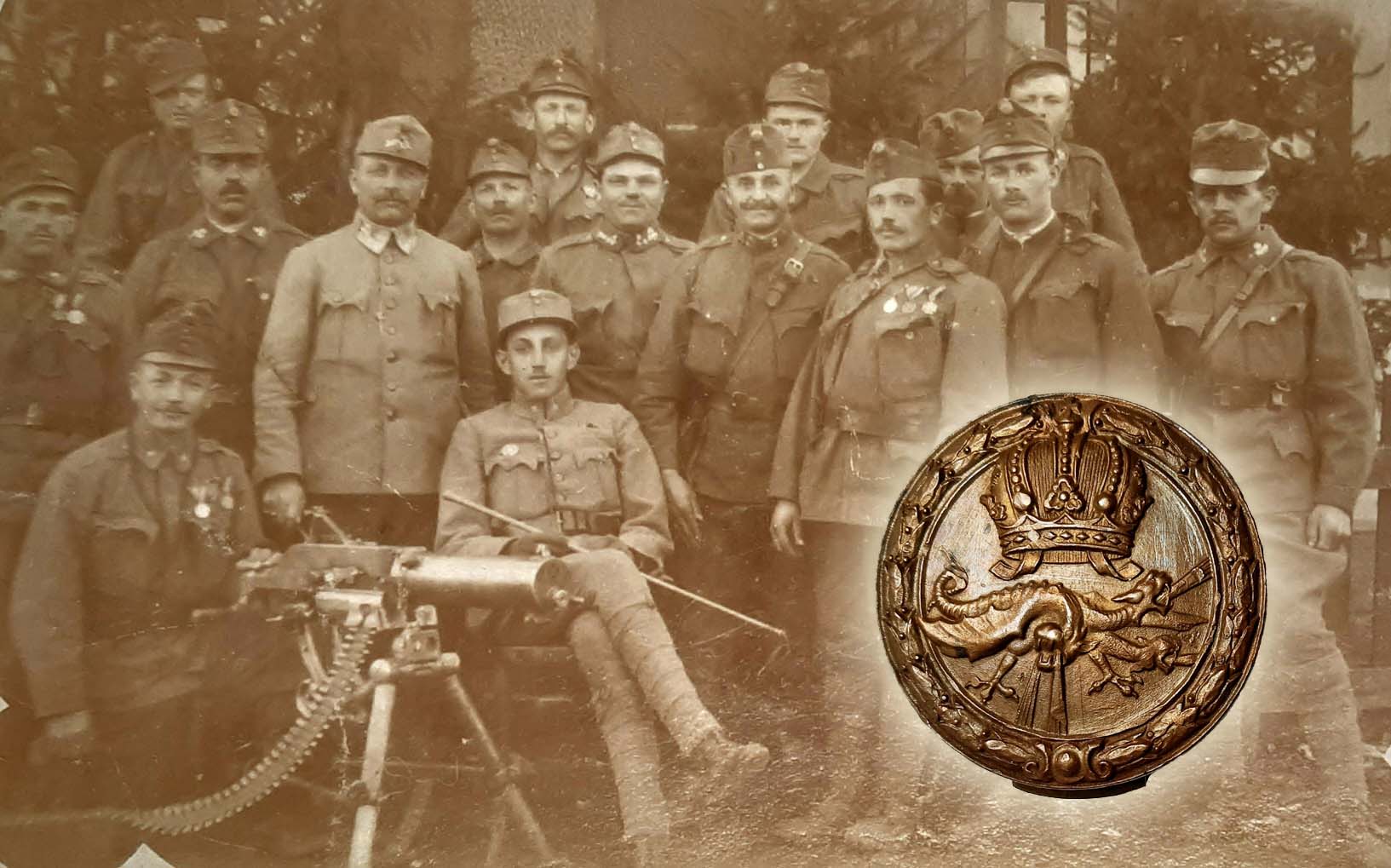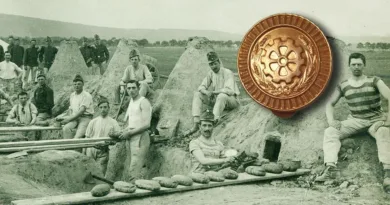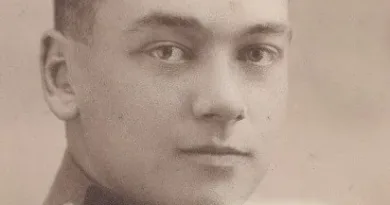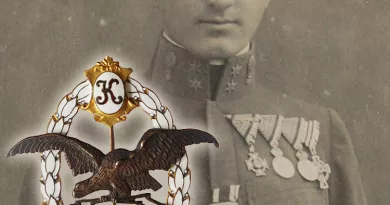MG gunners’ badge
Another high-quality entry by Gábor Széplaki.
In the Monarchy machine guns were introduced as direct shooting support of the infantry units after the millennium. Initially in 1908, one machine gun squadron was first set up in the infantry units of the Royal Hungarian Honvéd Army. They included two Schwarzlose machine guns, served in peace by 1 officer, 15 crew and 5 horses. The description of the weapon can be found in another entry. After mobilization, however, this number increased to 38 people and 21 horses. By 1909, all infantry squadrons had machine guns, and gradually the number of new squads increased. Thus, by the beginning of the war, all infantry battalions already had such a section. The transport of one machine gun required two horses: one carrying the 18 kg weapon and the 18.5 kg stand, and the other carrying the shield armor of 7 mm thickness, weighing about 40 kg, for the protection of the operator. The ammunition stockpile for the weapon was added to five other animals, which counted 10,000 pieces of 8 mm rifle bullets, with 250 in linen straps. In some Jager battalions of the Joint Army, the fourth squadrons were equipped with bicycles. These squadrons were made up of three carbines and one machine gun platoon with two machine guns. Fast-moving cyclists were assigned to cavalry formations as they were able to achieve nearly the same march performance.

In peace with the cavalry, the mg squadron belonged to the cavalry regiments. Initially, only the cavalry brigades were equipped with mg sections. Thus, of the 16 joint hussar regiments only 7 got a mg section, and from the 10 Honvéd hussar regiments only 4. In these units the service of four weapons required three officers, 57 staff and 53 horses. Weapons of the cavalry units were slightly different as they did not use the heavy shield armor. Their ammunition counted 15,000 bullets. From 1908, the pike grey uniform was introduced in the army, but in the cavalry only the machine gun squads were initially supplied. The soldiers with the machine guns were not wearing riding boots, but boots and leather shin pads with spurs fixed with leather straps. The colorful lined hussar uniform was replaced by a hooded grey cape without lapels, followed by a black fur-collared gown. They were wearing a field cap, and the mg staff did not wear the sword tied to the waistband. IThe sword was mounted on the left side of the horse back on the horseshoe bag. By 1915, the colorful and ornate uniforms from the monarchy’s army were gradually disappearing. Modern-day warfare with camouflage clothing gave the soldier a better chance of survival.

When the war broke out, two Honvéd army cavalry divisions -the 5th and 11th divisions — were mobilized. They included two machine gun squadrons per brigade and a cycling squadron with the aforementioned machine gun section. As the war progressed, it became necessary to increase the firepower of the cavalry, so new machine gun squads were set up.

In all three armies of the Monarchy, the machine gunner’s medal was introduced on August 7, 1908. The conditions for the awarding were laid down in E-8, paragraph 16§ 100 of the instruction, unfortunately I have not yet been able to find this. The badge is made of thick brass, but is also known for its thin plate design. The badge is round, 450 mm in diameter and 70 mm thick at the edge, bordered by a wreath of tanned branches in a ring by edge lines, stitched together by an ornate buckle at 6 o’clock. The center part of the badge has a smooth surface and a convex design. In the lower half, as a very apt metaphor for the weapon, a detailed, three-headed dragon is depicted that spews deadly fire in all directions. In the upper part there is the Imperial or the Hungarian crown. On the back, the Ω shaped ear was soldered, which was fixed above the right pocket of the jacket.

The modernized Schwarzlose machine gun and the distinguishing badge continued to live in the Hungarian Royal Army: in 1925 and 1932, the rifleman’s medal was published in the official Gazette.




